Цели урока:
- образовательные:
- научить студентов применять программы перевода текста и компьютерные словари
-
развивающие:
- развитие навыков индивидуальной практической работы;
- развитие способности логически рассуждать;
- воспитательные:
- воспитание творческого подхода к работе, желания экспериментировать.
Программное обеспечение урока:
- операционная система Windows Vista;
- программа «PROMT»;
- электронный словарь AlphaLex.
Дидактические материалы:
- инструкции по выполнения практической работы;
- тексты для перевода:
а) адаптированный;
б) оригинальный.
Оборудование урока: персональные компьютеры.
Реализация поставленных задач.
Ход урока
1. Постановка цели урока
Учитель. Почти каждому из нас приходилось переводить тексты, с английского языка на русский для себя или для других. Это технические описания бытовых приборов, которыми мы пользуемся, и которых становится в наших квартирах все больше. Перевод текстов – трудоемкий процесс, занимающий много времени. В настоящее время эту работу можно выполнить с помощью компьютера. Разработано множество специализированных программ с английскими словарями (англо-русский, англо-французский, англо-немецкий и т.д.), потому что 85% всей деловой информации распространяется на английском языке.
Сегодня на уроке вы должны научиться правильно использовать специальную программу и электронный словарь, сравнить качество перевода с вашим переводом и сделать выводы:
а) в какой мере электронный перевод соответствует переводимому тексту;
б) можно ли его считать абсолютно правильным;
в) какие преимущества и недостатки вы отметили в процессе компьютерного перевода.
2. Объяснение нового материала
Преподаватель рассказывает о правилах перевода текста на компьютере.
- Выполнение практической работы в 2 этапа:
1 этап:
а) открыть текст №1.
б) выполнить анализ компьютерного перевода и произвести его корректировку (20 мин.);
в) проверить перевод текста целиком в исправленном виде (10 мин.)
г) сверить с оригинальным переводом (5мин).
2 этап:
а) открыть текст №2.
б) перевести с помощью компьютерного словаря текст №2 (20 мин.);
в) отредактировать (10 мин.)
г) сверить с оригинальным переводом (5мин.)
- Подведение итогов урока
Приложение
Текст №1
Electric Power Consumers and Power System
An electric power consumer is an enterprise utilizing electric power. Its operation characteristics vary during the hours of day, days and nights, days of week and seasons.
All electric power consumers are divided into groups with common load characteristics. To the first group belong municipal consumers with a predominant lighting load: dwelling houses, hospital, theatres, street lighting system lighting systems, mines, etc.
To the second group belong industrial consumers with a predominant power load (electric motors): industrial plants, mines, etc.
To the third group belongs transport, for example, electrified railways. The fourth consist of agricultural consumers, for example, electrotractors.
The operating load conditions of each group are determined by the load graph. The load graph shows the consumption of power during different periods of day, month, and year. On the load graph the time of the maximum loads and minimum loads is given.
Large industrial areas with cities are supplied from electric networks fed by electric power plants. These plants are interconnected for operation in parallel and located in different parts of the given area. They may include some large thermal and hydroelectric power plants.
The sum total of the electric power plants, the networks that interconnect them and the power utilizing devices of the consumers, is called a power system. All the components of a power system are interrelated by the common processes of protection, distribution, and consumption of both electric and heat power.
In a power system, all the parallelly operating plants carry the total load oh all the consumers supplied by the given system.
Текст №2
The motor-generator set of the converter is of a guarded construction and consists of a DC motor and a single-phase AC generator. Both machines are enclosed in common housing 15, the motor armature and generator field structure being assembled on common shaft 20.
The converter motor is four-pole, with commutating poles and shunt excitation.
The generator is synchronous. Two windings, main CO and auxiliary ДО ones are laid in the generator slots. The auxiliary winding supplies, via the selenium rectifier, power to generator excitation winding BT, the finishes of which are brought out to the slip rings.
The converter shaft rotates in two radial single-row bearings 1 and 35. The converter has axial ventilation carried out by centrifugal fan 6 located on the collector side. The air flow is sucked in by the ventilator through the openings in protective band 26 to cool slip ring 30, and, in passing the ventilation ducts — in the space between stator core 23, housing 15, through the air gap between the stator and field structure —to cool the windings of the generator rotor and stator.
An additional air flow is sucked in through the louvers located between the generator and motor. The whole of the air flow cools winding 21 of the armature, pole coils, collector 14 and then is drawn off outside by the fan through the openings in cap 7. The shaft has the clockwise sense of rotation if viewed from the fan side, which is indicated by an arrow on the converter housing.
To prevent from radio interference, capacitors Kl and K2 are connected to terminals —1, +34 and the brush-holders of the motor and generator.
The elementary diagram of the motor-generator set is shown in Fig. 3.

 Получите свидетельство
Получите свидетельство Вход
Вход




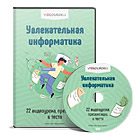
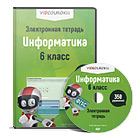
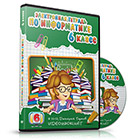
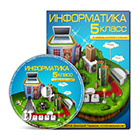



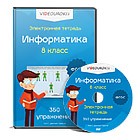
 Техника перевода текста с использованием компьютера (43 КB)
Техника перевода текста с использованием компьютера (43 КB)
 0
0 974
974 61
61 Нравится
0
Нравится
0


